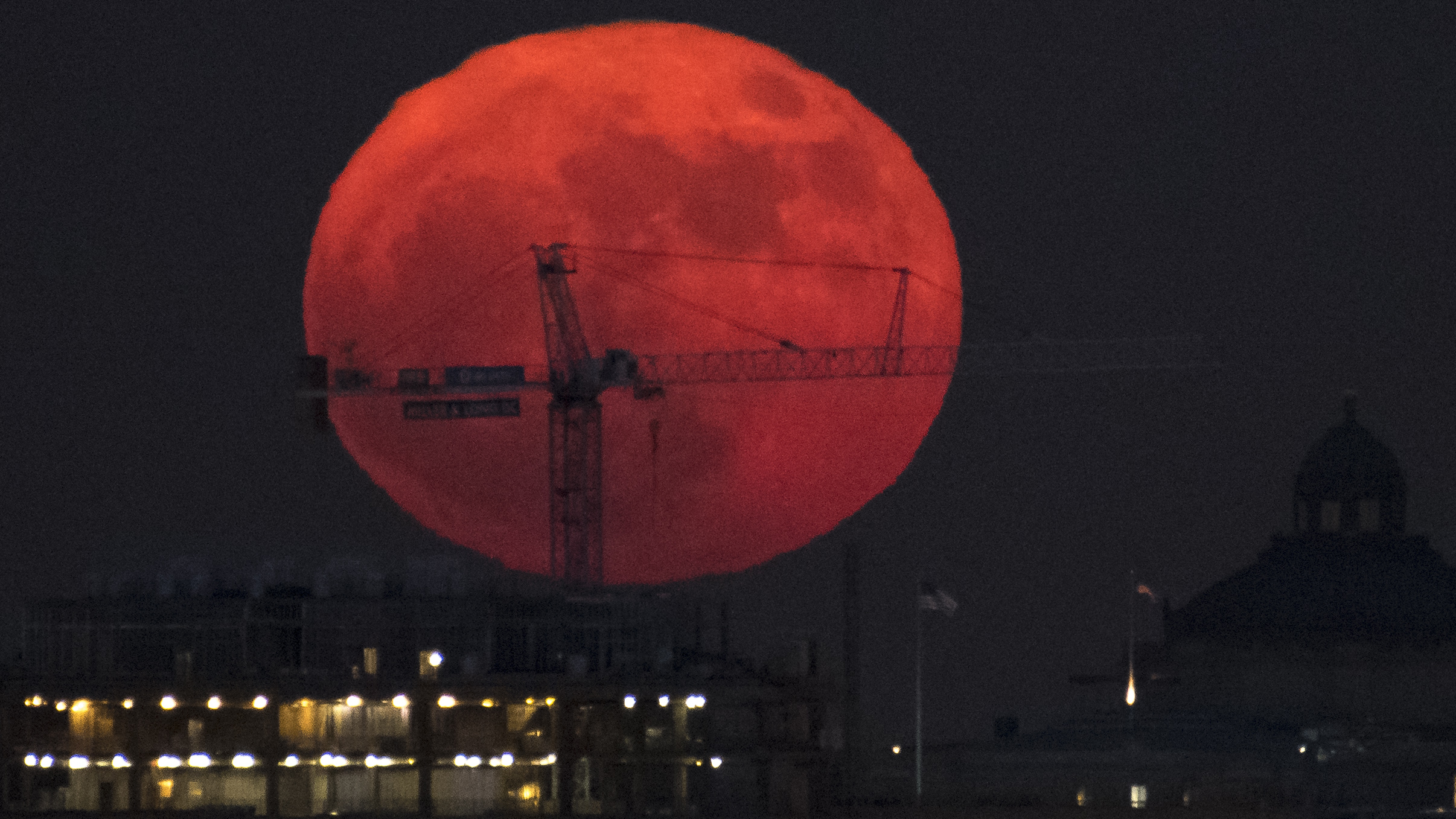Strawberry supermoon: June full moon free webcast canceled due to clouds
The Virtual Telescope Project has canceled its Strawberry supermoon webcast of June 14 due to cloudy weather.
Update for 4:45 pm ET: The Virtual Telescope Project has canceled its Strawberry supermoon webcast due to cloudy weather. Here's what to expect for the Strawberry supermoon in your night sky, as well as how to capture the perfect supermoon photo.
The full moon of June will shine bright today, but if bad weather clouds your view, don't fret. You'll be able to see the Full Strawberry Moon in a live webcast for free.
The Virtual Telescope Project in Ceccano, Italy will host a free livestream of the full moon on Tuesday (June 14). The webcast, which will now begin at 4:45 p.m. EDT (2045 GMT), will show live views of the full moon, the second supermoon of 2022, as it rises over Rome. You can watch the livestream in the video feed above.
"We will admire the full moon rising above the glorious monuments of Rome, the
Eternal City," astrophysicist Gianluca Masi of the Virtual Telescope Project wrote in an email alert. Masi will also host the webcast at the Virtual Telescope Project website and on YouTube.
Related: Supermoon secrets: 7 surprising big moon facts

Looking for a telescope to see the supermoon? We recommend the Celestron Astro Fi 102 as the top pick in our best beginner's telescope guide.
The June full moon is the second of four consecutive supermoons in which the full moon of a month coincides with the moon at or near perigee, its closest point to the Earth in its monthly orbit. A supermoon can appear ever-so-slightly larger than the full moon does when it is farthest from Earth (NASA has said it can appear up to 30% brighter and 17% larger), but it won't look much different to the casual observer.
June's Full Strawberry Supermoon will occur on Tuesday at 7:51 a.m. EDT (1151 GMT), but the moon will appear full to observers in the day before and after the actual event. So feel free to watch the moon shine from June 13-15. It gets its "strawberry" name from the short strawberry harvesting season it coincides with.
Breaking space news, the latest updates on rocket launches, skywatching events and more!
The full moon of June will be the lowest full moon of 2022, with the moon rising just 23.3 degrees above the southern horizon early on June 15 for observers in Washington, D.C., NASA has said. That's because its coming ahead of the summer solstice on June 21.
"On the summer solstice, the sun appears highest in the sky for the year," NASA wrote in a guide. "Full moons are opposite the sun, so a full moon near the summer solstice will be low in the sky."
Full moons are among the easiest stargazing events to observe and a great target for amateur astronomers just starting to observe with binoculars or telescopes. If you're hoping to photograph the moon, our best cameras for astrophotography and best lenses for astrophotography guides may be of help. You can also check out our guide on how to photograph the moon with a camera to plan your lunar photo session.
Editor's Note: If you snap an amazing moon photo and would like to share it with Space.com's readers, send your photo(s), comments, and your name and location to spacephotos@space.com.
Email Tariq Malik at tmalik@space.com or follow him @tariqjmalik. Follow us @Spacedotcom, Facebook and Instagram.

Tariq is the award-winning Editor-in-Chief of Space.com and joined the team in 2001. He covers human spaceflight, as well as skywatching and entertainment. He became Space.com's Editor-in-Chief in 2019. Before joining Space.com, Tariq was a staff reporter for The Los Angeles Times covering education and city beats in La Habra, Fullerton and Huntington Beach. He's a recipient of the 2022 Harry Kolcum Award for excellence in space reporting and the 2025 Space Pioneer Award from the National Space Society. He is an Eagle Scout and Space Camp alum with journalism degrees from the USC and NYU. You can find Tariq at Space.com and as the co-host to the This Week In Space podcast on the TWiT network. To see his latest project, you can follow Tariq on Twitter @tariqjmalik.

